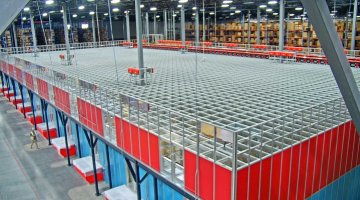Don’t Underestimate the Value of Warehouse Uptime to your Bottom Line

Between labor shortages, unexpected equipment repairs, and the day-to-day challenge of operating a distribution facility to meet ever-evolving customer demands, the value of ensuring “all systems go” can sometimes remain unnoticed. But the value of uptime is tremendously impactful to a business’s bottom line.
Emergencies and errors are bound to happen. However, warehouse uptime significantly impacts overall efficiency, productivity, and ultimately, profitability.
Here are some key reasons why uptime is critical:
Operational Efficiency: Maximizing uptime ensures that the warehouse or distribution center can consistently handle incoming and outgoing shipments without disruptions. This leads to smoother workflows, faster order processing, and improved operational performance.
Customer Satisfaction: A high uptime (99%+) allows businesses to meet customer expectations by ensuring timely deliveries and minimizing delays. Increased customer satisfaction leads to brand loyalty, repeat business, and a more positive brand reputation, especially in this time of rapid information dissemination via social media.
Productivity: When warehouse equipment, such as conveyor systems or sorters have high uptime, it minimizes disruption and keeps the operation running smoothly. Employees can work at total capacity without unnecessary interruptions, resulting in higher productivity.
Cost Savings: Maximizing equipment uptime helps avoid costly operational interruptions, which can occur due to equipment failures, unresolved maintenance issues, or other unplanned events. By reducing downtime, businesses can minimize the financial impact of lost productivity, repairs, and emergency maintenance.
Inventory Management: Uptime is crucial for accurate inventory management. When systems are consistently operational, businesses can rely on real-time data to track inventory levels accurately, manage stock replenishment effectively, and prevent stockouts or overstocks.
Supply Chain Optimization: A well-functioning warehouse or distribution center with high uptime contributes to a smooth overall supply chain. It enables timely order fulfillment, reduces order processing times, and facilitates efficient coordination with suppliers, transporters, and other stakeholders in the supply chain.
Safety and Risk Management: Uptime ensures a safe working environment. Well-maintained equipment and systems minimize the risk of accidents and injuries, as they are less likely to malfunction or cause operational hazards.
Maximizing uptime in warehouses and distribution centers is crucial for improving operational efficiency, productivity, cost management, and safety – and certainly impacts your bottom line. By focusing on uptime, businesses can create a reliable and efficient operation that delivers value to customers, employees, and stakeholders.
KPI Solutions’ Lifetime Services team offers modular, scalable, and easily customizable support options for you. Contact us today to help with MHE repairs, retrofits, replacements, spare parts, facility reconfigurations, and software upgrades.
Categories (tags):


